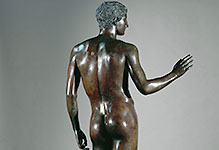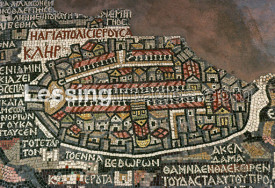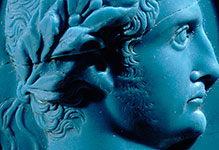
Antiquity
Ancient Egypt, Ancient Greece, Imperial Roman Period, Ancient Middle East.

#03030122
Stele of King Ashurbanipal, from Borsippa,southern Iraq; Neo-Assyrian, 668-655 B...

#03030124
Amulet with a figure of Lamashtu, designed to ward off evil, from Mesopotamia,...

#03030126
Gold and silver horn-shaped drinking cup from Marash,Syria. 5th BCE. The vessel...

#03030132
This stele comes from the Tophet in Carthage (today Tunisia) Such grave markers...

#03030133
Terracotta figure of a tambourine player, Phoenician, from Tharros, Sardinia, 7t...

#03030134
Female figurine found in a tomb under a house. A mothergoddess.Around 6...

#03030136
Zoomorphic vase,terracotta. Marlik civilisation Nort...

#03030137
Zoomorphic vase,terracotta. Marlik civilisation Nort...

#03030138
Pearl dedicated to the moon god. Neo Sumerian, reign of I...

#03030139
"Sit Shamsi", the ceremony of sunrise. Bronze model of a high place, dedicat...

#03030140
Cup,Mesopotamian, late Prehistoric period, 3.400 to 3200 BCE.he cup is carved on...

#03030141
Stone cult vessel,from Mesopotamia, 3400-3200 BCE. This was the time when large...





